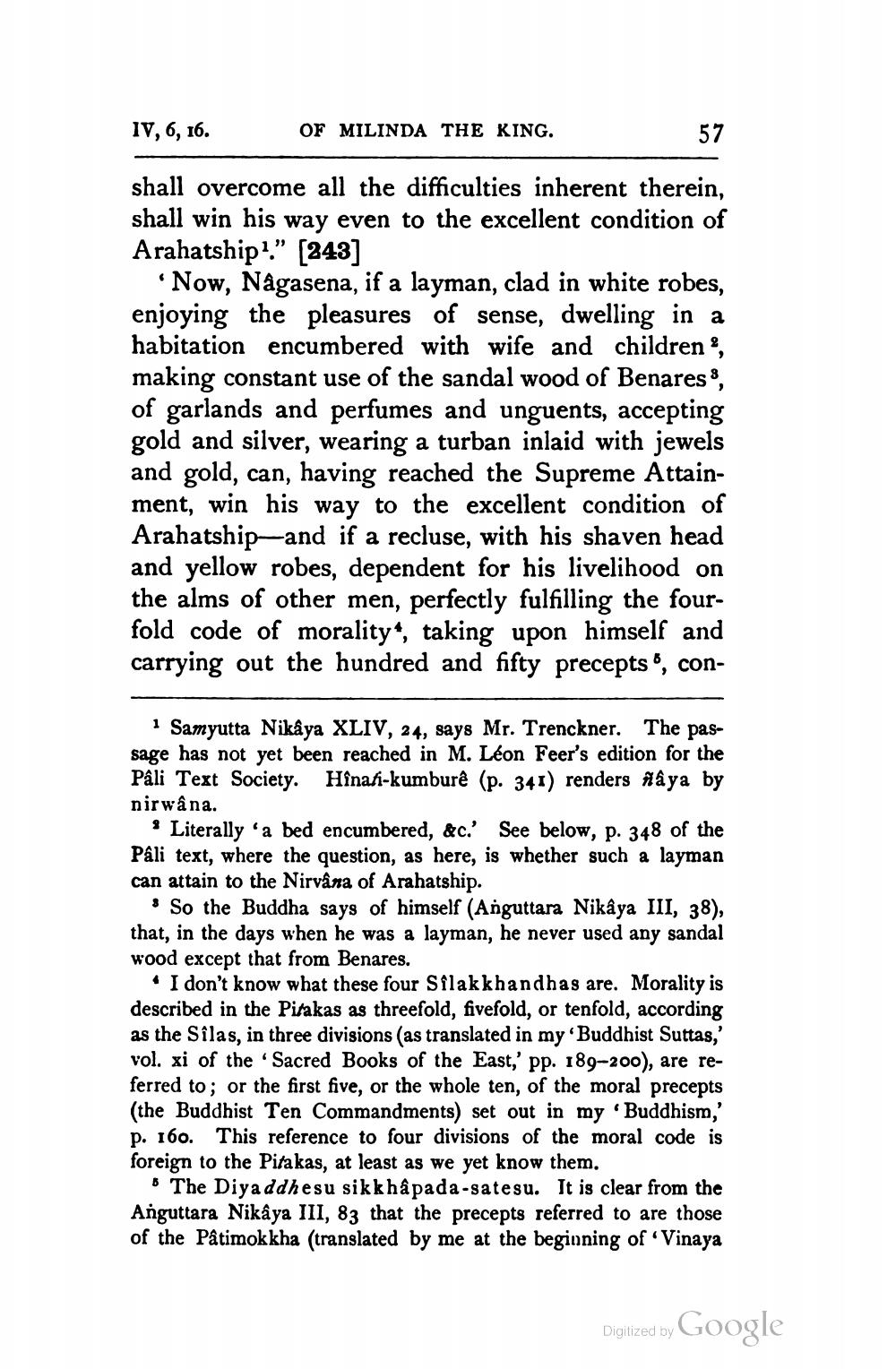________________
IV, 6, 16.
OF MILINDA THE KING.
57
shall overcome all the difficulties inherent therein, shall win his way even to the excellent condition of Arahatship?." [243]
Now, Nagasena, if a layman, clad in white robes, enjoying the pleasures of sense, dwelling in a habitation encumbered with wife and children, making constant use of the sandal wood of Benares , of garlands and perfumes and unguents, accepting gold and silver, wearing a turban inlaid with jewels and gold, can, having reached the Supreme Attainment, win his way to the excellent condition of Arahatship-and if a recluse, with his shaven head and yellow robes, dependent for his livelihood on the alms of other men, perfectly fulfilling the fourfold code of morality', taking upon himself and carrying out the hundred and fifty precepts", con
Samyutta Nikâya XLIV, 24, says Mr. Trenckner. The passage has not yet been reached in M. Léon Feer's edition for the Pâli Text Society. Hînafi-kumburê (p. 341) renders naya by nirwana.
9 Literally "a bed encumbered, &c.' See below, p. 348 of the Pâli text, where the question, as here, is whether such a layman can attain to the Nirvana of Arahatship.
* So the Buddha says of himself (Anguttara Nikâya III, 38), that, in the days when he was a layman, he never used any sandal wood except that from Benares.
I don't know what these four Silakkhandhas are. Morality is described in the Pitakas as threefold, fivefold, or tenfold, according as the Sîlas, in three divisions (as translated in my Buddhist Suttas,' vol. xi of the Sacred Books of the East,' pp. 189-200), are referred to; or the first five, or the whole ten, of the moral precepts (the Buddhist Ten Commandments) set out in my Buddhism, p. 160. This reference to four divisions of the moral code is foreign to the Pitakas, at least as we yet know them.
The Diya ddhesu sikkhapada-satesu. It is clear from the Anguttara Nikâya III, 83 that the precepts referred to are those of the Pâtimokkha (translated by me at the beginning of Vinaya
Digitized by Google




